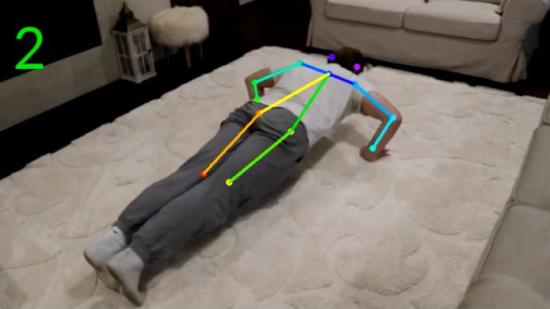FitMonkey
Over the past decade, the popularity of fit tech products has grown dramatically. fitness tracking devices alone now represent a $30 billion dollar industry. With the globe slowly beginning to emerge from a pandemic, gyms and health clubs face a challenging market. Throughout 2020, consumers have built out home gyms and invested in immersive home fitness solutions such as Tonal, Mirror, and Peloton. As the Pandemic comes to an end, and gyms search for ways to bring customers back, that’s where FitMonkey comes in.
FitMonkey is designed to operate at the edge on low powered devices that are mounted on or near exercise equipment in a gym. FitMonkey’s exercise detection algorithm works by identifying keypoints on the user’s body, and processing the coordinates to detect both whether or not an exercise is being performed, and whether or not the user is performing the exercise with good form. Once an exercise is detected, optical flow uses motion detection to count the number of repetitions. The modular code structure of FitMonkey means that new exercises can be quickly incorporated into the FitMonkey corpus, at minimal time and cost.
As proof of concept, we have trained models on pushups, body weight squats, and pull ups. The long term vision for this software is the construction of an in-gym ecosystem that can track reps and form, allow users to plan workouts, provide push notifications when equipment becomes available, and recommend exercises that might fit the users fitness goals. Such an immersive in-gym anaerobic experience is just the Fit Tech differentiator that gyms need to lure back customers post pandemic.











